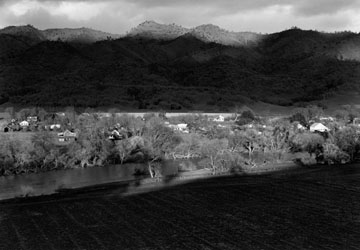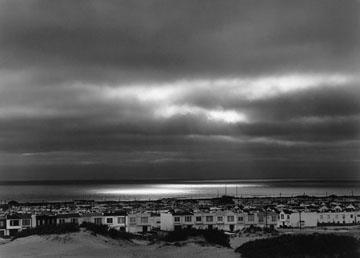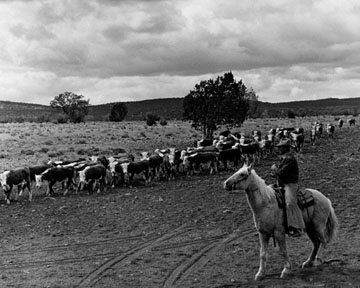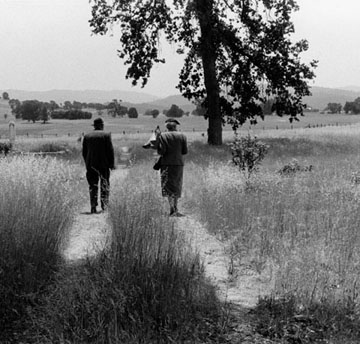




|

| Pirkle Jones: Seven Decades Photographed
From Pictorial California to the Politics of the Black Panther Party
A film by Jane Levy Reed
Edited by James Reed, Nathaniel Dorsky
and Associate Editor, Gina Leibrecht
Film Running Time: 28 minutes
DVD running time: 80 minutes
Pirkle Jones’s seven decades of involvement in photography have helped define the San Francisco Bay Area’s dual photographic traditions of elegant landscape imagery and biting social documentation. He is widely acknowledged for his success at both pursuits, yet unlike most of his peers he masterfully combined formal elegance with social commentary throughout his career.
Jane Levy Reed’s Pirkle Jones: Seven Decades Photographed incorporates some 150 of Jones’s finely crafted black-and-white photographs. Interweaving archival footage with recent interviews, the thirty-minute film allows the photographer to tell his story, beginning with his childhood in Ohio and his first encounter with San Francisco in transit to World War II’s Pacific Theater. In 1947, the GI Bill allowed him to return to San Francisco to pursue his passion for photography at the California School of Fine Arts (now the San Francisco Art Institute), where he studied with Ansel Adams and Minor White.
The film follows the photographer through a series of photographic projects. In 1956, Jones and Berkeley photographer Dorothea Lange were commissioned by Life magazine to document the last year of the Berryessa Valley, northeast of San Francisco, which was to be flooded by a new dam constructed to quench the thirst of California’s growing population. Although the Death of a Valley project was not published at the time, its completion confirmed Jones’s understanding that the simple act of taking a photograph is political; his images, carefully composed from corner to corner, have a somber tone that acknowledges the import of the facts they depict. That they consistently involve the viewer in the social circumstances of their making underlines the strength of Jones’s vision.
The approach Jones established with Lange continued through two collaborative projects he undertook with his wife, Ruth-Marion Baruch. The first, Walnut Grove: Portrait of a Town (completed in 1964), documented a small agricultural community in the Sacramento River Delta and its inhabitants. The second resulted in the exhibition A Photographic Essay on the Black Panthers, presented at the M. H. de Young Museum in San Francisco in 1968. In the film, Jones talks about the tenseness he felt in the crowds he and Ruth-Marion photographed at Black Panther political rallies, the apprehension they felt about taking the pictures, and the decision to continue. The photographer’s comments are supplemented with an interview with Kathleen Neal Cleaver, then the director of communications for the Black Panther Party and married to Eldridge Cleaver, who talks about how the Panthers recognized that these solemn yet dignified pictures were made by photographers who had a sense of caring and pathos about what they were seeing. After following Jones through a series of personal projects, including two striking images of the same oak tree on a hillside in Marin County—composed identically yet taken twenty-five years apart—the film ends with a series of landscape photographs he made on Mt. Tamalpais. These images are much quieter than his earlier work, yet they still contain the elegiac moment that is embedded in almost all of his photographs.
In recent years, Pirkle Jones’s photographs have been presented in exhibitions organized by the Santa Barbara Museum of Art and the San Francisco Museum of Modern Art, and they have been published in an Aperture monograph. The film Pirkle Jones: Seven Decades Photographed adds a new dimension to the public’s appreciation of these engaging images by providing the context of the photographer’s commentary and reminiscences about his life in photography.
Director and producer Jane Levy Reed is active internationally as a filmmaker, curator, critic, and historian of photography. Her first film was released in 1978. She most recently directed and produced the acclaimed 2006 film My Eyes Were Fresh: The Life and Photographs of John Gutmann.
|
| Landscape, Jackson, California, 1948; Town of Monticello, early Spring, from Death of a Valley, 1956; Sunset District
and Pacific Ocean,
San Francisco, 1951; Cowboy, Arizona, 1957; Couple at the cemetery, Berryessa Valley, 1956
|





